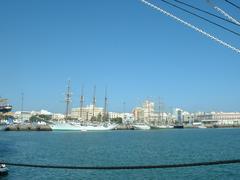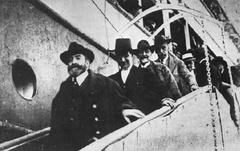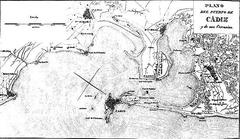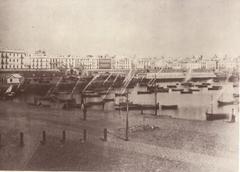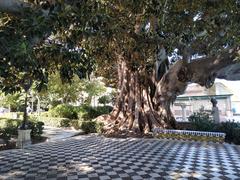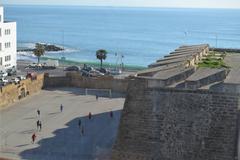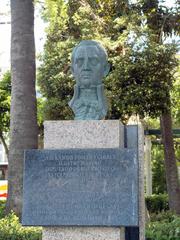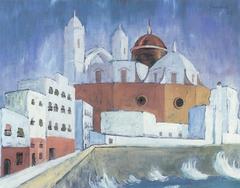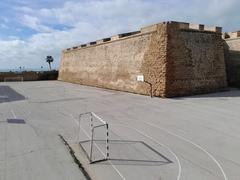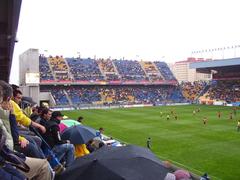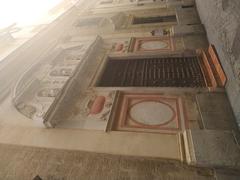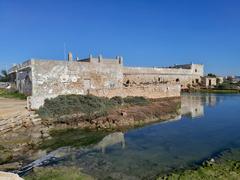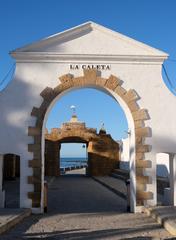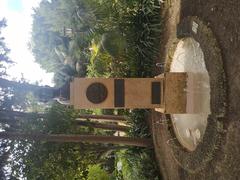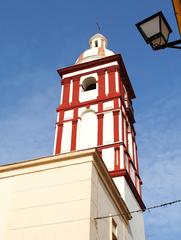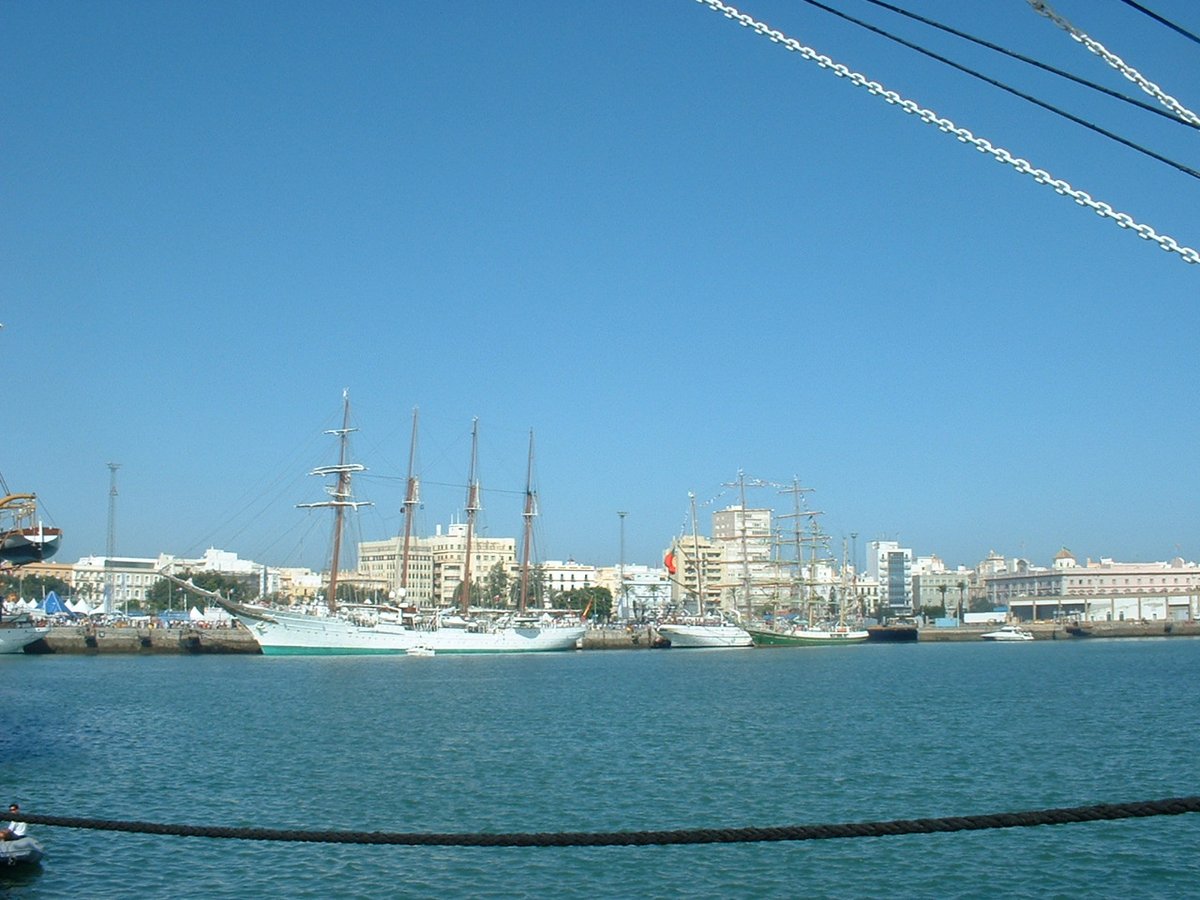
Port of the Bay of Cádiz: Visiting Hours, Tickets, and Travel Guide
Date: 14/06/2025
Introduction: The Maritime Heart of Andalusia
Nestled on Spain’s southwestern Atlantic coast, the Port of the Bay of Cádiz is a vibrant and historic maritime gateway that has shaped the region’s cultural and economic landscapes for centuries. With a strategic location bridging the Atlantic Ocean and the Mediterranean Sea, Cádiz has long been a crossroads for trade, naval activity, and cultural exchange since Phoenician and Roman times. Its prominence peaked in the 17th and 18th centuries as Spain’s primary colonial trade center, cemented by the relocation of the Casa de la Contratación. Today, the port harmoniously blends modern cruise facilities with the city’s rich historical fabric, offering visitors seamless access to iconic landmarks like the Cádiz Cathedral, Castillo de San Sebastián, and the lively Plaza de San Juan de Dios.
Whether you arrive by cruise ship or independently, the port area is designed for convenience, with accessible infrastructure, sustainable tourism initiatives, and a wealth of nearby attractions. This comprehensive guide, drawing on resources such as Spain.info, VisitingCadiz.com, and other authoritative travel portals, provides everything you need to plan your visit, from historical context and practical information to travel tips and FAQs.
Contents
- Introduction
- Geographical Advantages and Early Development
- The Golden Age: 17th–18th Centuries
- Cádiz and the Constitution of 1812
- 19th–21st Centuries: Modernization and Tourism
- Practical Visitor Information (Hours, Tickets, Tours)
- Top Nearby Attractions
- Accessibility
- Travel Tips
- FAQs
- Summary & Final Tips
- Sources
Geographical Advantages and Early Development
The Port of the Bay of Cádiz has thrived for millennia due to its natural harbor, sheltered from prevailing winds and perfectly positioned for trade between Europe, Africa, and the Americas. This strategic location made Cádiz a vital node for ancient Phoenician and Roman traders and later set the stage for its rise as a major port in early modern Europe (Spain.info).
The Golden Age: 17th–18th Centuries
Rise as a Colonial Trade Center
In the 17th and 18th centuries, Cádiz emerged as Spain’s principal port for colonial trade. The pivotal transfer of the Casa de la Contratación from Seville to Cádiz in 1717 established it as the administrative and commercial epicenter for transatlantic exchanges. The port expanded rapidly, with new warehouses, shipyards, and customs facilities supporting a booming trade in silver, tobacco, textiles, and other commodities (Academia.edu).
Human Intervention and Port Expansion
To overcome natural challenges such as shifting sandbanks and limited dock space, the port underwent extensive dredging, construction of breakwaters, and expansion of quays—demonstrating Cádiz’s commitment to modernization and growth.
Cádiz and the Constitution of 1812
During the Peninsular War, Cádiz played a crucial role as the seat of the Spanish Cortes and the birthplace of the liberal Constitution of 1812. Its robust fortifications enabled the city to withstand French sieges, making the port a symbol of resistance and political transformation (Academia.edu).
19th–21st Centuries: Modernization and Tourism
Free Port Status and Industrial Adaptation
The loss of Spain’s American colonies in the 19th century prompted Cádiz to become a free port, encouraging international commerce through reduced duties. The port adapted to the steamship era, deepening docks and upgrading facilities to remain competitive.
Urban Integration and Infrastructure
Today, the port is seamlessly integrated with the city. The cruise terminal is a five-minute walk from the historic center, linked by modern road and rail connections to major Spanish cities and nearby airports (Spain.info).
Emergence as a Cruise Tourism Hub
Cádiz now welcomes thousands of cruise passengers each year, offering modern terminals and amenities. Its location makes it an ideal base for exploring the city’s historic sites, beaches, and cultural attractions (VisitingCadiz.com).
Sustainability and Accessibility
Recent investments focus on sustainability (renewable energy, improved sanitation, shore power) and accessibility, with wheelchair-friendly facilities, ramps, and integration with public transport (bus lines 1, 3, and 5) (Spain.info).
Practical Visitor Information
Visiting Hours
- Cruise Terminal: Generally open daily from 8:00 AM to 8:00 PM, aligning with cruise schedules.
- Tourist Information Desks: Open from 9:00 AM to 6:00 PM.
- Historical Sites: Vary by attraction (e.g., Cádiz Cathedral typically 10:00 AM–6:00 PM).
Tickets and Guided Tours
- Port Entry: Free for visitors; tickets only required for guided tours, boat excursions, or entry to specific attractions.
- Where to Buy: Tourist information desks, online via official operators, or at attraction entrances.
Guided Tours
Explore options such as walking tours of the historic center, catamaran excursions, dolphin watching, and visits to the port’s industrial facilities and nearby shipyards (Barceló Guide).
Top Nearby Attractions
- Cádiz Cathedral: Baroque and Neoclassical masterpiece; climb the Poniente Tower for panoramic city views (Visiting Cádiz).
- Plaza de San Juan de Dios: Main square filled with shops and cafés, just minutes from the port (Adventour Begins).
- Torre Tavira: The city’s highest point, with a camera obscura and 360° views.
- Roman Theatre: One of Spain’s oldest, accessible via guided tours.
- La Caleta Beach: Famous for sunsets and local dining (Wanderlust Chloe).
- Mercado Central de Abastos: Bustling market for local food and tapas (Ellie’s Travel Tips).
- Castillo de San Sebastián: Historic fort with bay views.
- Museo de Cádiz: Archaeological and fine arts collections.
Accessibility
- The port and city center are both wheelchair-friendly, with ramps, smooth pavements, and accessible transport.
- Facilities include accessible restrooms and designated pathways.
- Public buses and taxis accommodate travelers with reduced mobility (Spain.info).
Travel Tips
- Getting There: Well-connected by road, rail, and nearby airports (Jerez ~40 km, Seville ~100 km) (Barceló Guide).
- Best Time to Visit: Spring (April–June) and autumn (September–October) offer mild weather and fewer crowds (Visiting Cádiz).
- Currency: Euro (€); credit cards widely accepted, but some cash is advisable (Ellie’s Travel Tips).
- Safety: Cádiz is generally safe; exercise standard precautions in crowded areas (Ellie’s Travel Tips).
- Local Customs: Lunch is typically from 1:30–3:30 PM, dinner after 8:30 PM. Tipping is appreciated but not obligatory.
- Language: Spanish is official, but English is widely spoken in tourism settings.
Dining and Local Cuisine
Cádiz is famous for its seafood and Andalusian flavors:
- Tortillitas de camarones: Shrimp fritters.
- Pescaíto frito: Fried fish.
- Gaditana-style fish stew.
- Turrón: Traditional nougat dessert.
Tapas bars and seafood restaurants abound near the port and in the historic center (Ellie’s Travel Tips).
Day Trips and Excursions
- Jerez de la Frontera: Sherry tours and equestrian shows, 40 mins by train/car.
- Seville: Under two hours by train.
- White Villages (Pueblos Blancos): Picturesque towns such as Arcos de la Frontera (Ellie’s Travel Tips).
- Bahía de Cádiz Natural Park: Birdwatching, hiking, eco-tours (Barceló Guide).
FAQs
What are the Port of Cádiz visiting hours?
Cruise terminal: 8:00 AM–8:00 PM daily, tourist information: 9:00 AM–6:00 PM. Check for seasonal or special event changes.
Are tickets required to enter the port?
General access is free. Tickets are needed for specific tours or events.
Is the port accessible for people with disabilities?
Yes, with wheelchair-friendly paths and facilities.
How do I get to the city center from the port?
A five- to ten-minute walk; taxis and shuttles are available.
Are guided tours available?
Yes, bookable at the tourist desk or online.
Where can I find more information?
Visit puertocadiz.com or Spain.info.
Summary & Final Tips
The Port of the Bay of Cádiz is a living testament to centuries of maritime history and cultural exchange. Its modern facilities, accessibility, and proximity to the historic center make it an ideal starting point for exploring Cádiz and Andalusia. Take advantage of guided tours, local cuisine, and nearby beaches. For the latest information, consult official resources and consider downloading the Audiala app for updates, maps, and personalized recommendations.
Sources
- Spain.info – Port of Cádiz: Visiting Hours, Tickets, Historical Sites & Complete Visitor Guide
- Cádiz Bay Port Authority – Visiting the Port of the Bay of Cadiz: Hours, Tickets, and Attractions Near Cadiz
- Barceló Guide – Port of the Bay of Cádiz: Visiting Hours, Tickets & Top Cádiz Historical Sites
- Academia.edu – The port of Cadiz between the modern and contemporary ages (17th and 18th centuries)
- VisitingCadiz.com – What to See and Do in Cádiz: A Comprehensive Guide
- Ellie’s Travel Tips – Cádiz Cruise Port Guide
- Adventour Begins – Cádiz Port Guide
- Travel with the Greens – Can You Walk Into Cádiz from Cruise Port?
- Wanderlust Chloe – Cádiz, Spain Travel Guide
